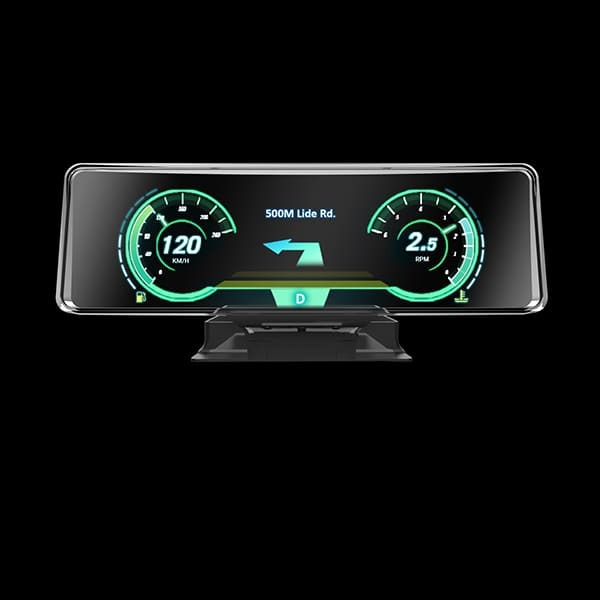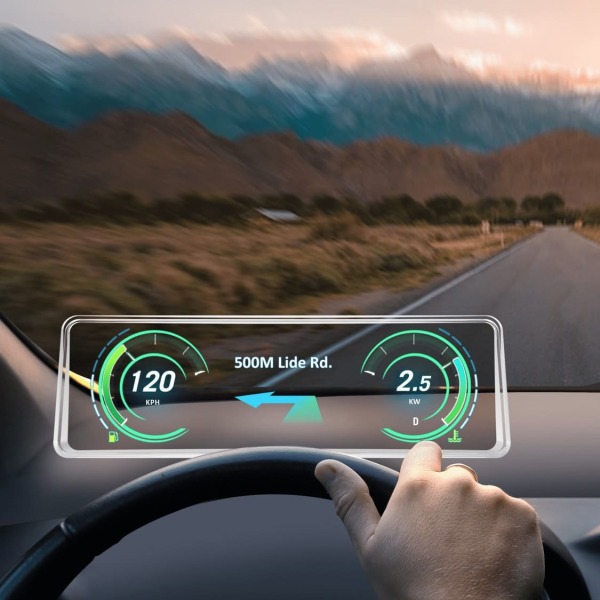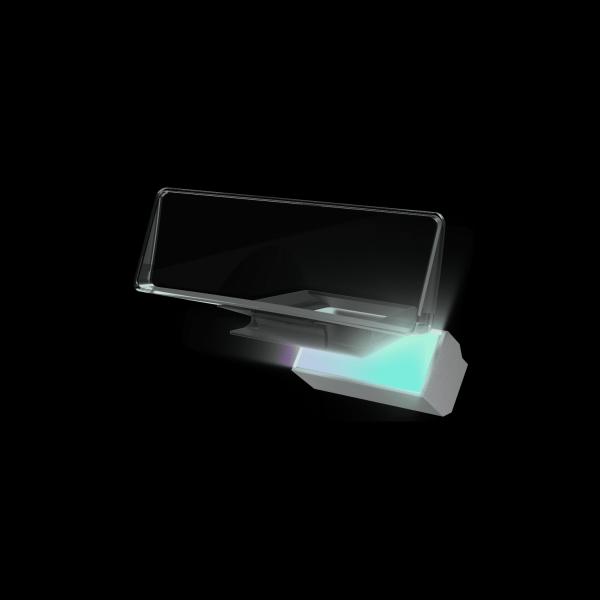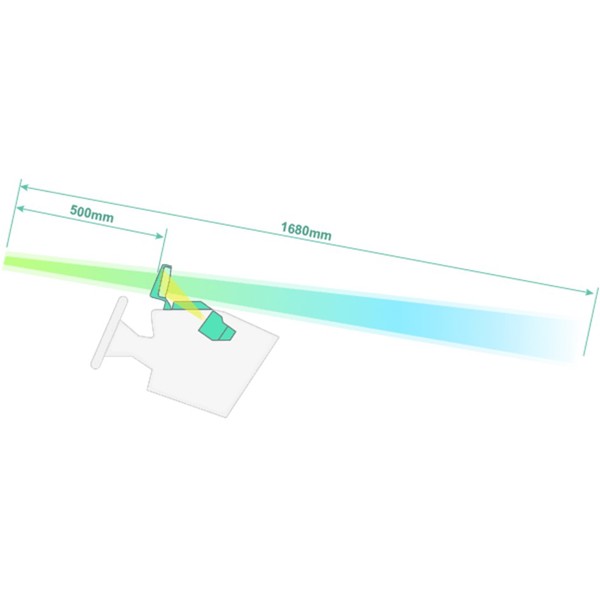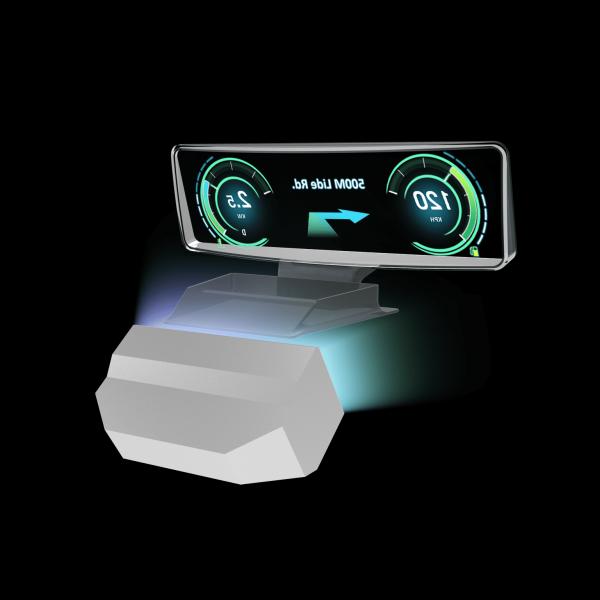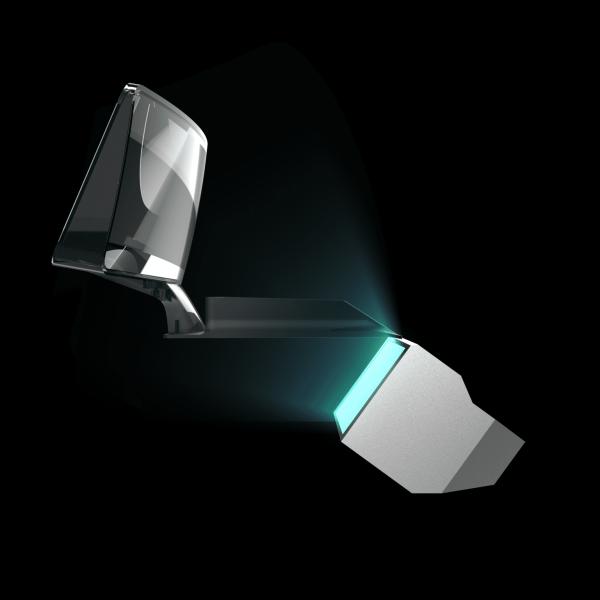- The Aerial car dashboard integrated with the HUD provides essential driving information such as dashboard and navigation routes. The information displayed can be customized.
- The display glass is transparent and does not interfere with the driver’s field of view.
- The image is projected 1.7m in front of the driver. High brightness and low scatters ensure image clearly visible even under sunlight.
- Super-large image provides up to 18° x 5° FOV at a resolution up to 1280 x 640.
- Installation is easy as the very compact footprint requires as little as 1L of space within the vehicle.
- Ultra-low power consumption (compared to AR-WHUD).
- Integration of HUD and dashboard lowers the cost of introduction.
- According to customers' needs, in addition to being used as a car dashboard, it can also be used simply as a HUD.
- shou_yu@unimax.com.tw
- +886-2-2897-0689
1. Automotive Electronics Development Trends
The history of automotive electronics began in the 1930s when vacuum tube car radios began appearing in cars. After World War II, the development of semiconductors, the popularization of microprocessors, advances in technology, reduced costs and other factors all spurred the rapid development of automotive electronics.
automotive electronics is a broad field whose applications alone can be divided into engine management, power control, chassis electronics, passive safety, driving assistance systems, passenger comfort, entertainment systems, integrated electronic cockpit system, and so on. With the exception of automotive experts, the average car user’s understanding of automotive electronics is limited to what they see in everyday life. An example of this is the onboard dash camera that was introduced quite early.
Further developments in automotive electronics resulted in automotive electronics products intended as driver aids or for entertainment. Digital dashboards, car stereos, head-up displays (HUD), blind spot detection, panoramic vision, gesture control, wireless charging, child presence detection, driver fatigue detection and so on are all examples of these.
The proliferation of automotive electronics products also meant more distractions during driving that indirectly introduce more risk factors. They also complicate the design of car interiors and clash with the contemporary preference for minimalist aesthetics. The latest car models now aim for an integrated approach to automotive electronics applications. An example of this is the replacement of the traditional central console and car stereo with a single large display.
The UniMAX HUD Aerial Car Dashboard was created in response to this new trend.
The HUD Aerial Car Dashboard not only combines the attributes of windshield type HUD and dashboards but also enhance the inherent strengths of both technologies.
2. Traditional Dashboard - The Invisible Killer in Driver Safety
The car dashboard displays a great deal of essential driver information such as speed, mileage, RPM, engine temperature, fuel, indicator lights and faults. automotive electronics are therefore frequently used.
Car dashboards are placed forward of the steering wheel for the convenience of drivers; they must also be positioned lower down to avoid blocking the driver’s view. The placement is not ideal and poses a potential hazard to driver safety.
Firstly, the driver’s eyes are looking into the distance while driving. Placing the car dashboard nearby meant that the eyes must re-focus when they switch from looking into the distance to looking at the dashboard. The 20-degree angle between looking ahead and look down at the dashboard meant the driver is not looking at the road.
As a result, when the driver’s eyes shift to the dashboard they must look down and focus on a nearby object, then look up and focus on the distance again. What this means is that they took their eyes off the road for 2 ~ 3 seconds. If the car is moving at high speed then such unsafe conditions may last for tens of meters. Each glance at the dashboard meant that the driver is placed in jeopardy again.
Even though the nature of dashboards meant that they must be placed in a lower and closer position, the UniMAX floating car dashboard can not only be placed in the same location as traditional dashboards; it also offers a solution to the dangers posed by traditional dash boards.
2.1 Holographic display
The HUD aerial car dashboard uses optical technology to project the image into the driver’s field of view a distance of 1.7m away. The driver can therefore see the information right away. Unlike traditional dashboards, they do not need to spend time refocusing their eyes.
.png)
Caption: HUD Aerial Car Dashboard projects the image 1.7m in front of the driver. The massive reduction in time needed by the eyes to refocus on nearby objects improves driver safety.
2.2 Transparent material that does not block the field of view
Traditional dashboards are placed about 20° below the driver’s field of view to avoid blocking the route.
The UniMAX HUD Aerial Car Dashboard is made from a transparent material so can be placed higher than traditional car dashboards without fear of interference. UniMax recommends placing the HUD Aerial Card Dashboard about 10° lower than the driver’s field of view. The driver can view the dashboard info just by looking downward slightly or through their peripheral vision, a great improvement for driving safety. The installation height can be customized to the customer’s requirements.
The transparent material offers more stylish and high-tech possibilities for car design aesthetics.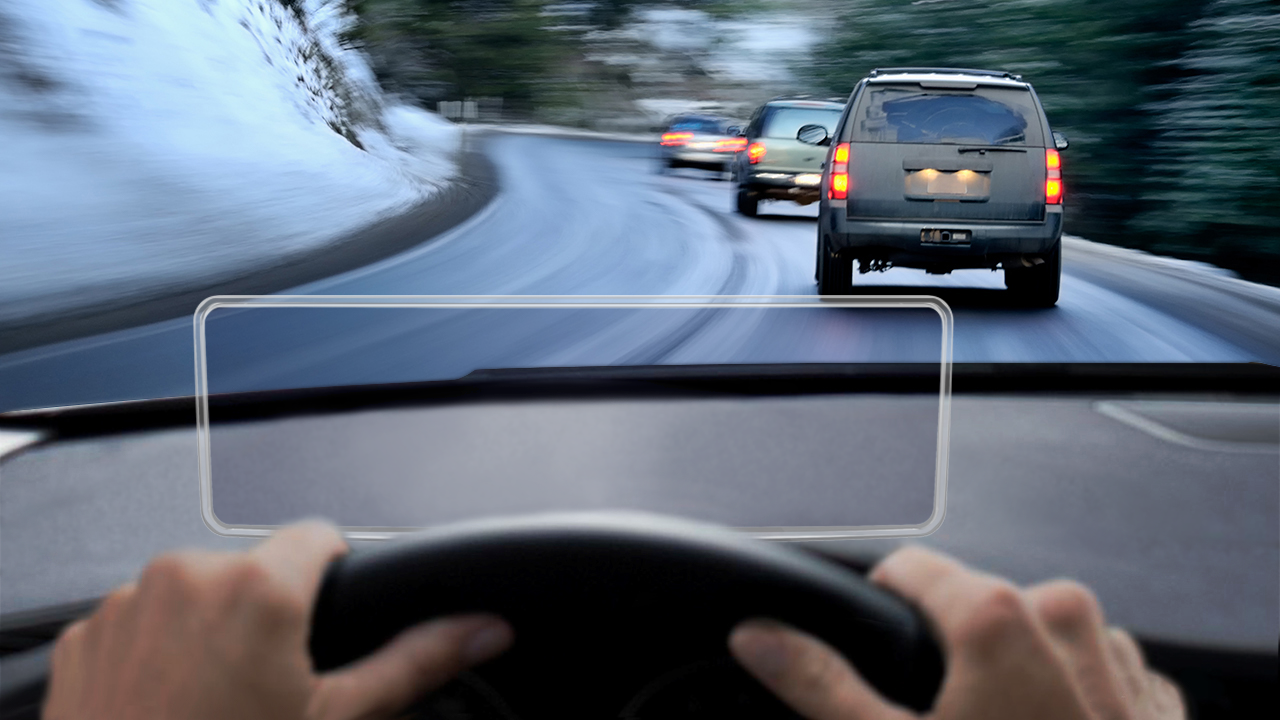
Caption: HUD Aerial Car Dashboard is made from a transparent material that does not interfere with the driver’s field of view and can be viewed by looking downward slightly.
UniMax HUD Aerial Card Dashboard not only retains the advantages of the dashboard and solves related safety issues. It also offers the benefits of Windshield Type HUD.
3. Windshield Type HUD - Many Limitations and Poor Image Quality
HUDs are becoming more common in automotive applications. Windshield Type HUDs can be concealed into the car structure and the holography imagery projected several meters ahead of the driver integrates seamlessly with the driver’s field of view.
Windshield Type HUD partially solves the safety issues of dashboards as well. It can project important dashboard information such as speed and navigation information so that the dashboard doesn’t have to be viewed as frequently. It is a very convenient automotive electronics product for drivers.
Windshield Type HUDs do have several technical issues that are difficult to surmount.
The Windshield Type HUDs is concealed into the vehicle structure. The light path structure and large footprint means installations take up a great deal of internal space. It can’t be installed directly in every car model and the parts need to be specially designed. It is therefore not that easy to install and heat dissipation is a big challenge too. (Extended reading: UniMAX Flat Type AR HUD (MAVE) Solves Installation Footprint Problem)
As previously mentioned, Windshield Type HD can project and only project several pieces of key information from the dashboard. This is therefore both its advantage and disadvantage.
The reason why Windshield Type HUD can only project several pieces of key information from the dashboard is due to physical constraints. Windshield Type HUD take up a lot of space but its image quality (FOV and resolution) is inadequate for replacing dashboards entirely. The image is not big enough and the resolution is not high enough.
In addition to the physical factors, Windshield Type HUD projections are placed about 4° below the driver’s field-of-view. Even if the physical constraints are overcome and all of the dashboard information can be projected into the driver’s field of view, this may increase risk by interfering with the ability of the driver to read the road.
The physical constraints and usage scenario are why Windshield Type HUDs are limited to projecting a small amount of information.
The UniMax HUD Aerial Car Dashboard retains the advantages of the Windshield Type HUD while overcoming its weaknesses.
3.1 Small Footprint, Ease of Installation, and Fast Heat Dissipation
The UniMax HUD Aerial Car Dashboard’s PGU, heat sink and PCBA need to be buried into the car. Their total footprint is a small as 1L. Its exceptional light path simplifies cooling making it easier to install in different car models.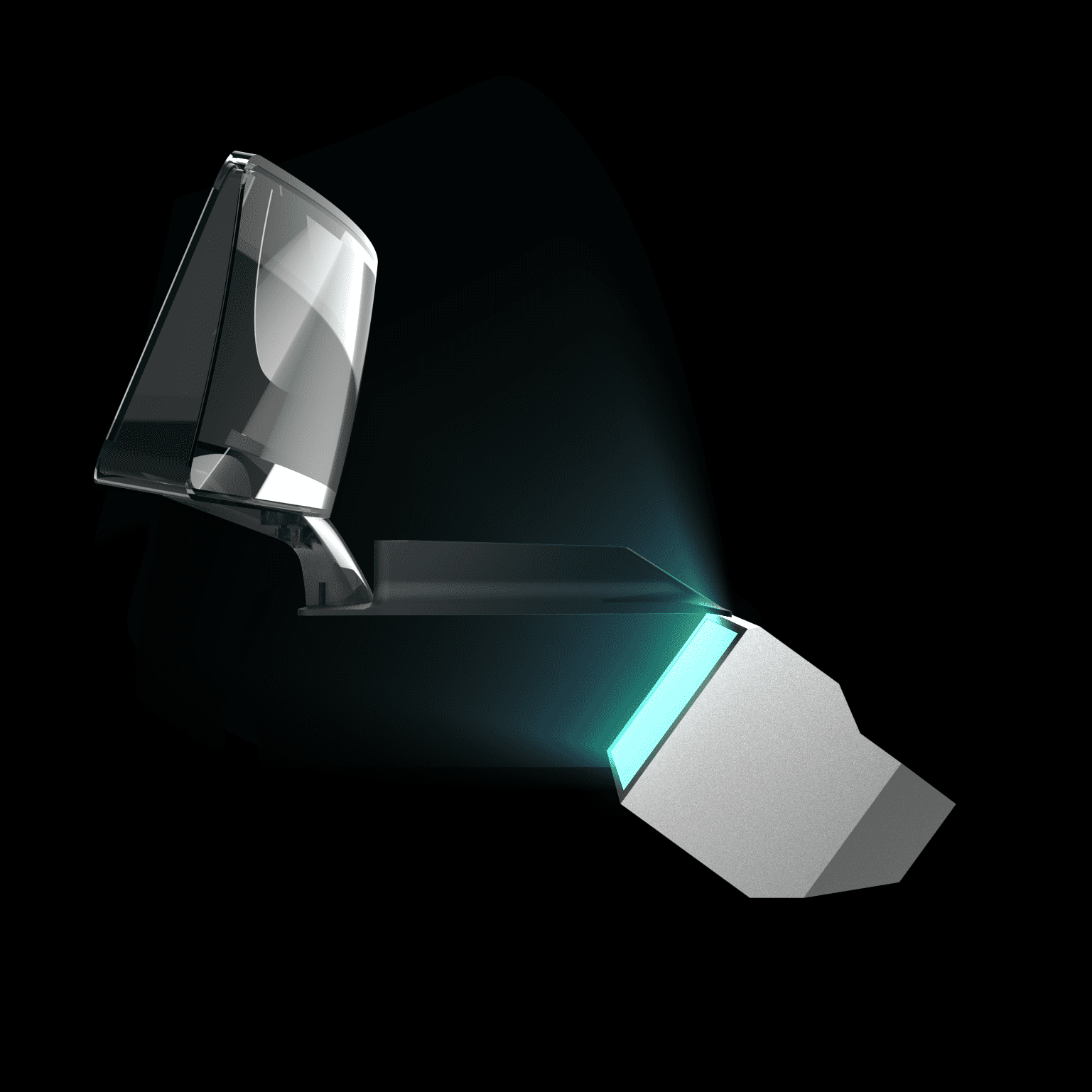
Caption: HUD Aerial Car Dashboard is easy to bury in cars due to its small footprint and low cooling requirements.
3.2 Super-large FOV and High Resolution
The UniMax Aerial Car Dashboard can achieve a FOV of 18° x 5° or more with a resolution of 1280 x 640 of higher. It can not only accept all information needed for dashboards but also deliver crystal-clear imagery. The dashboard contents can also be adjusted to the customer’s needs.
As previously, The HUD Aerial Car Dashboard can be installed 10° below the driver’s field of view . The driver only has to look downwards slightly or even use their peripheral vision to see the dashboard information. This not only improves safety but also provides the driver with a clear, wide-open view again..png)
Caption: HUD Aerial Car Dashboard is far superior to WHD in terms of FOV or color. Pictured above is the difference in viewing angle and FOV between HUD Aerial Car Dashboard and WHUD.
The UniMax HUD Aerial Car Dashboard is not only easy to introduce but can also project all of the essential dashboard information. It improves driver safety and offers the advantages of Windshield Type HUD without the weaknesses.
4. Compatible with Advances in Windshield Type HUD and Dashboard Technologies
The UniMax Aerial Card Dashboard was developed in response to the trend towards integrated automotive electronics based on the reasons given above.
The UniMax Aerial Card Dashboard’s transparency, holographic projection, super-large FOV and high-resolution as well as ease of installation means it can replace traditional dashboards and cost less than Windshield Type HUDs to introduce. It also improves driver safety, enhances the car interior, and leverages technology to take drivers into the future.
UniMax is part of the ASUS Group and specializes in the supply of automotive electronics products. Every element of the HUD Aerial Car Dashboard can be customized including the dimensions of the transparent display, the size of FOV, product installation location, and display interface.
The HUD Aerial Car Dashboard can be connected to a variety of automotive electronics information including car stereos, reverse cameras, panoramic sensors, voice assistance, satnav, and chassis inspection. A wide range of driving modes can be displayed by the HUD Aerial Car Dashboard.%20V2.png)
Car dashboard displays can be customized and adjusted. At the same time, UniMax has a solid design team that can provide customers with excellent and diverse car dashboard display designs. The following are design examples:
Minimalist Version of Car Dashboard Display Diagram Design.png)
.png)
.png)
.png)
.png)
.png)
.png)
Simple Version of Car Dashboard Display Diagram Design.png)
.png)
.png)
.png)
.png)
.png)
.png)
Rich Version of Car Dashboard Display Diagram Design.png)
.png)
.png)
.png)
.png)
.png)
.png)
| System | item | specification |
| Picture Generate Unit | Panel Size | 4.3” |
| Resolution | 1280 x 640 | |
| Brightness | 30,000 nits | |
| Contrast Radio | > 1500:1 | |
| Exterior Optics | FOV ( H X V ) | 18° x 5° |
| Eye Box | 130 x 40mm | |
| Eye Relief | 500 mm | |
| Image Distance | 1.68 m | |
| Image Brightness | 3,000 nits | |
| Electrical | PGU Power Consumption | 3.5 W |
Related Links
Press
Revolutionary Car HUD Technology:The Latest Models and Applications!
UniMax Introduces World’s First MAVE AR HUD for Automotive
Augmented Reality (AR) HUD - Redefining the Future of Driving
Car Dashboard 101: The Latest Car Dashboards Will Blow Your Mind!!
Product
Flat Type Augmented Reality(AR) HUD-MAVE
UniMax uses cookies and similar technologies to perform essential online functions, analyze online activities and other functions. For detailed information, please visit UniMax Privacy Policy- 「How UniMax Uses Cookies and Similar Technologies」 .

